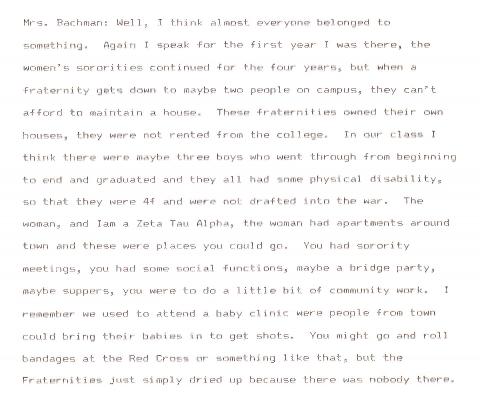In an interview, Helen Alexander Bachman (Class of 1946) claims that a majority of the students belonged to a sorority, fraternity, or other organization on campus. Bachman estimates that 99 percent of female students belonged to one of the four sororities. The fraternities owned houses while sorority women had apartments in Carlisle. Fraternities "dried up" during the war due to the absence of men. Sororities, however, had meetings, social functions, bridge parties, suppers, and community service events. Professors' wives often became patronesses for sororities, attending teas with the women and hosting spaghetti suppers. As a Zeta Tau Alpha, Bachman went to a baby clinic that distributed shots to townspeople. Other sorority members wrapped bandages for the Red Cross or volunteered for other wartime effort civic duties. Bachman lived in the Phi Delta Theta fraternity house (now Stuart House), which the college rented from the fraternity for a women's dormitory, during her junior and senior years.

